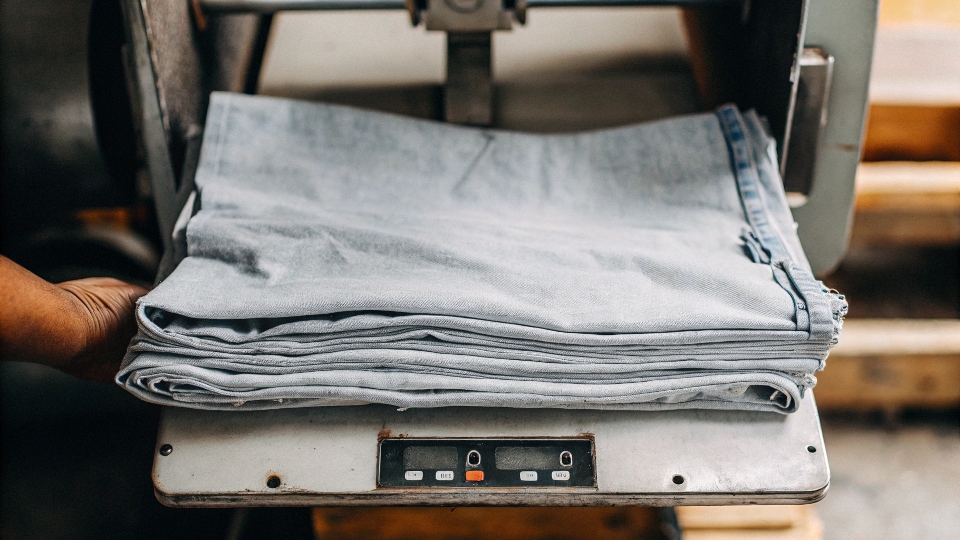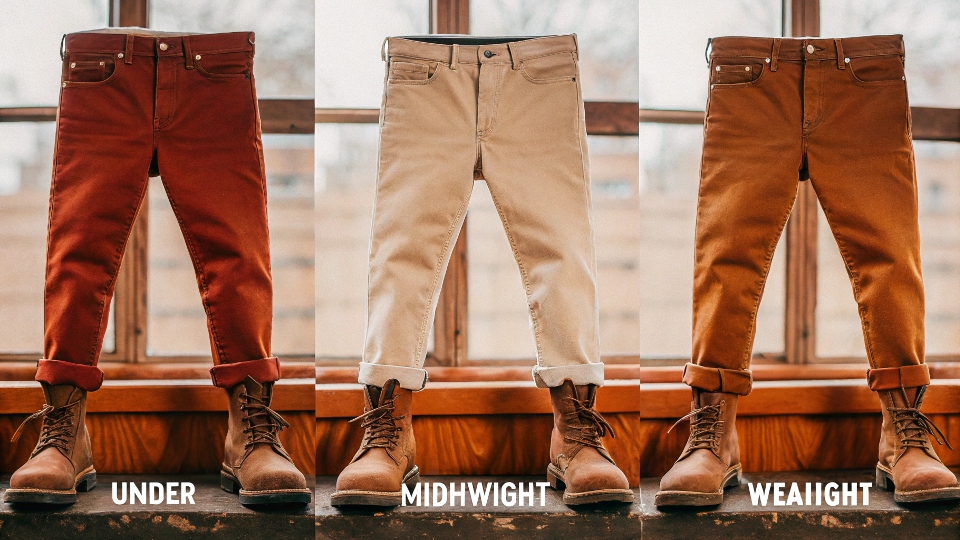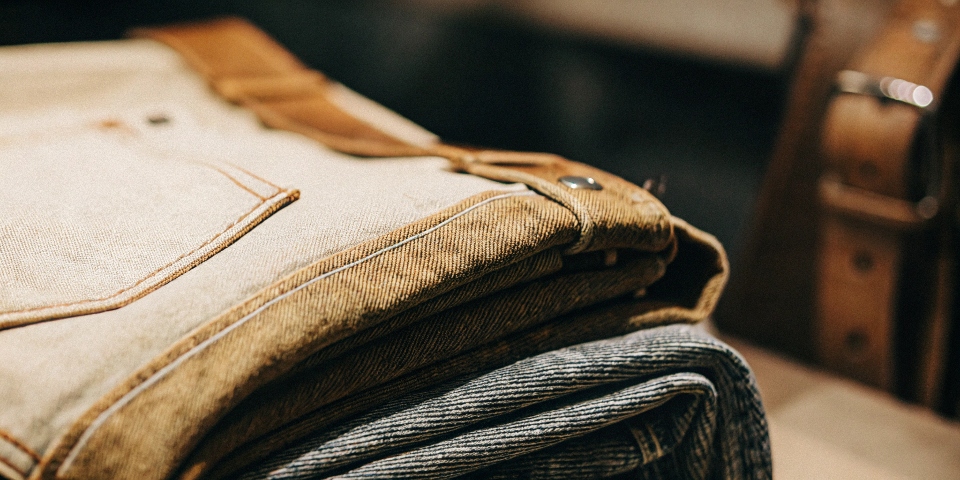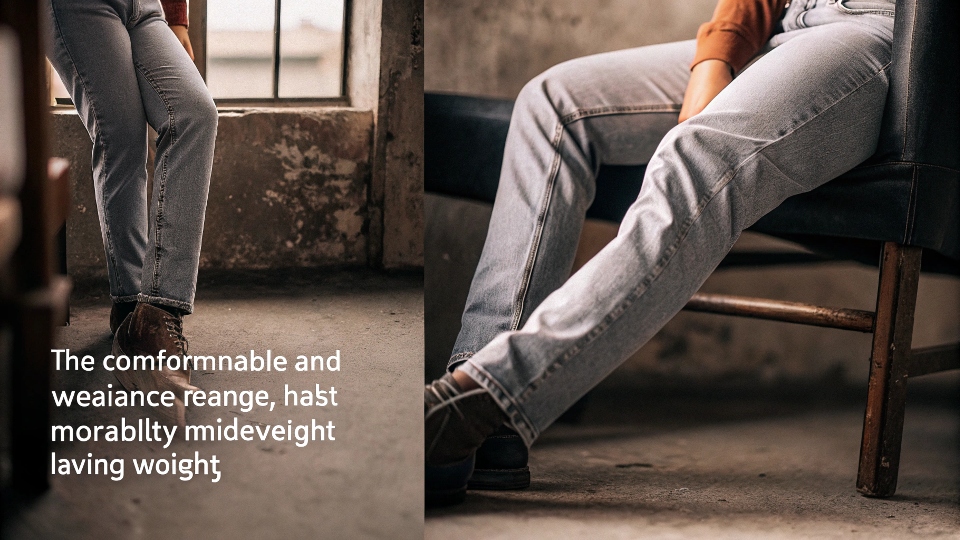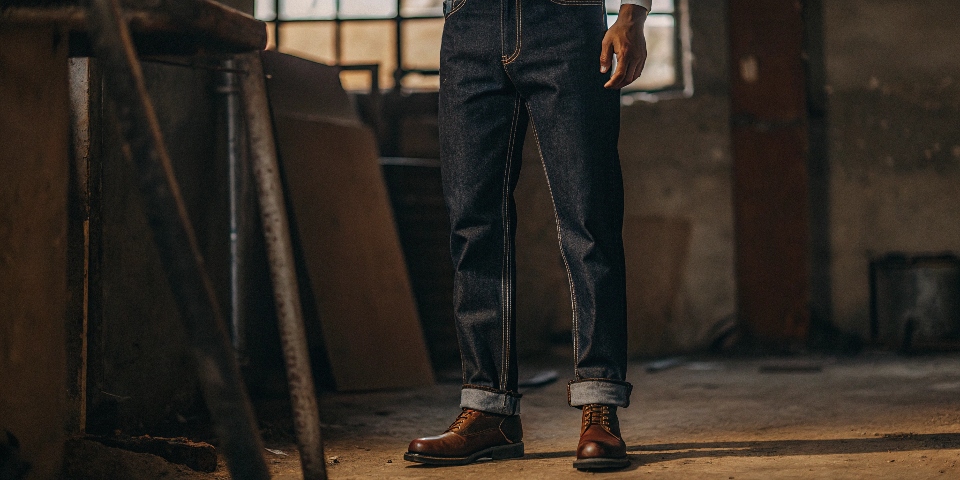You see terms like "12oz" or "16oz" on jean tags and feel lost. You know it has something to do with quality, but it feels like a secret language for experts.
"Oz" stands for ounce and is the standard way to measure the weight of denim fabric. A higher "oz" number means the fabric is heavier, thicker, and generally more durable, directly impacting how the jeans feel and wear.
In my two decades running the DiZNEW denim factory, the question of weight, or "oz," comes up every single day. It's the first specification we discuss for any new production run.
It's a simple number, but it defines the entire character of the jean. For a designer like Dean, choosing the right oz is as crucial as choosing the right color. Let's break down this fundamental concept so you can choose your next pair of jeans with confidence.
What does oz mean in denim?
You're trying to buy a good pair of jeans, but the "oz" number is just confusing. Without knowing what it means, you can't tell if you're buying a flimsy summer pair or a heavy winter one.
In denim, "oz" refers to the weight of one square yard of fabric in ounces. It's a direct measure of thickness and density. Higher oz means a heavier, more substantial fabric; lower oz means a lighter, softer fabric.
Think of it as the language of denim thickness1. At the factory, when we get an order, the weight is one of the first things we verify. This number tells us everything. My notes simplify it best: oz is a special unit for denim2, and the higher the ounces, the thicker the jeans.
We generally group denim into three main categories. Anything under 12oz is considered lightweight. This is your classic summer jean fabric—comfortable, breathable, and easy to wear from day one.
Then there's midweight, typically from 12oz to 15oz. This is the sweet spot and the most common weight for high-quality jeans. It offers a great balance of durability without being too difficult to break in.
Finally, anything 16oz and above is heavyweight territory. This is seriously thick and durable fabric, built to last and create amazing fades over time.
| Weight Category | Ounce (oz) Range | Common Characteristics | Best For |
|---|---|---|---|
| Lightweight | Under 12oz | Soft, breathable, very comfortable, quick break-in | Summer wear, fashion fits, immediate comfort |
| Midweight | 12oz - 15oz | Balanced, durable, versatile, noticeable break-in | Year-round wear, classic raw denim, most people |
| Heavyweight | 16oz+ | Stiff, rugged, extremely durable, long break-in | Durability, sharp fades, cold climates |
What is 16 oz of denim?
You see denim enthusiasts talking about their 16oz jeans with pride. But to you, it just sounds incredibly heavy and uncomfortable, and you wonder why anyone would want that.
16oz denim is officially in the heavyweight class. It's a thick, tough, and rigid fabric known for its extreme durability and ability to produce sharp, high-contrast fades. It is for those who value longevity and character.
When you get into the 16oz-and-above category, you are entering the world of serious denim. My insight here is that these heavyweights are where selvedge denim3 truly shines . The old shuttle looms are excellent at creating these dense, heavy fabrics.
The experience of wearing 16oz denim is completely different from a standard pair of jeans. At first, they feel like armor. They are stiff and can even stand up on their own. The break-in period is a real commitment and can take months of consistent wear. But the reward is worth it for many.
The rigid fabric creates deep, sharp creases that eventually become stunning fade patterns. These jeans are also incredibly durable and can withstand years of hard wear. They are not for everyone.
They can be hot in the summer and restrictive at first. But for the denim purist who wants a pair of jeans that tells a story and is built like a tank, 16oz is a fantastic choice.
Is 12.5 oz denim good?
You're looking for a solid, reliable pair of jeans for everyday life. You see many options around the 12.5oz mark and wonder if that's a good standard to aim for.
Yes, 12.5oz denim is not just good; it's considered by many to be the perfect all-around weight. It sits in the ideal midweight range, offering excellent durability without the extreme stiffness of a heavyweight jean.
In my factory, we produce more midweight denim4 than any other category, and for good reason. My notes clearly state that 12-14oz is a medium style, and it's usually sufficient for most people's needs.
A 12.5oz fabric5 is the workhorse of the denim world. It's substantial enough to feel strong and develop good character over time, yet it's light enough to be comfortable for year-round wear in most climates.
The break-in period is manageable, often taking just a few weeks to feel perfectly molded to your body. This weight is incredibly versatile for us from a production standpoint. It's perfect for a classic raw denim project, but it also responds beautifully to factory washing and distressing processes.
For a designer creating their first core collection, I almost always recommend starting with a 12.5oz to 14oz denim. It delivers the authentic denim experience that customers expect without the major hurdles of a true heavyweight.
Is 25oz denim too heavy?
You've heard whispers of "super heavyweight" 25oz jeans and you're shocked. You can't imagine wearing something that heavy and you assume it must be a gimmick.
For almost everyone, yes, 25oz denim is too heavy. This is an extreme, niche product for the most dedicated denim enthusiasts. It's incredibly thick, uncomfortable, and difficult to wear, making it more of a challenge than a practical garment.
As someone who has worked with denim my entire life, even I find 25oz fabric6 to be shocking. This is not just heavyweight; this is what we call "super heavyweight."
It feels less like fabric and more like a thick, rigid carpet. Working with it in the factory is a nightmare. It's so dense that it regularly breaks our industrial sewing machine needles. Just imagine what it feels like to wear.
The break-in period isn't measured in months; it's measured in years. Buttoning them up for the first time is a struggle, and simple actions like sitting down or climbing stairs can be a real challenge. While the potential for unique, armor-like fades is there, the trade-off in comfort and practicality is massive.
This is a fabric for a very small group of people who want to push the limits of what denim can be. It is not suitable for daily wear and is definitely not something I would recommend to anyone but the most hardcore hobbyist.
Conclusion
Denim "oz" is about weight and thickness. Lightweight is for easy comfort, heavyweight is for extreme durability, and midweight offers the perfect balance. Choose the weight that fits your lifestyle.
-
Understanding denim thickness is crucial for choosing the right jeans for comfort and durability. ↩
-
Exploring the significance of oz in denim can enhance your knowledge about fabric quality and selection. ↩
-
Discover the craftsmanship behind selvedge denim and learn why it stands out in the world of high-quality jeans. ↩
-
Discover the advantages of midweight denim, including its versatility and comfort for year-round wear. ↩
-
Explore this link to understand why 12.5oz fabric is considered the workhorse of denim, offering strength and comfort. ↩
-
Explore this link to understand the unique properties and applications of 25oz fabric in the denim industry. ↩

